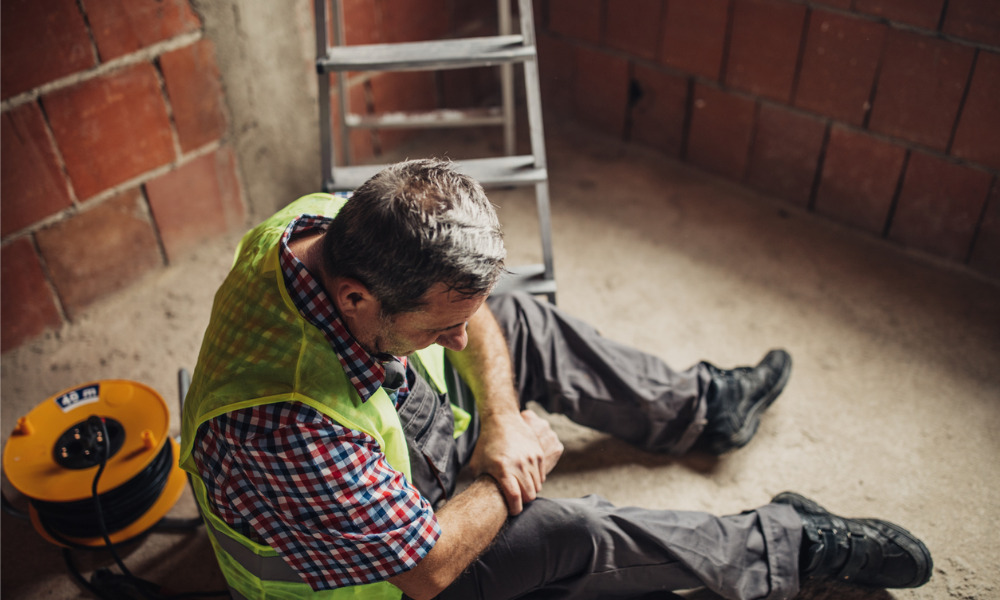Correct implementation of regulations and policies crucial to ensuring employee safety, says OHS expert

Building a culture of prevention is essential to an organization’s safety program.
We’ve all heard about one-off freak accidents that tragically occur at work such as drownings, shootings or spider bites.
But others just seem to keep happening and seem inherent to most workplaces – and it can be especially frustrating for safety professionals to keep having to deal with the same issues.
“On the whole, Canada is one of the safest countries for workers,” says Robert Winsloe, Managing Director of health and safety consultancy Arinite.
Arinite recently produced a global report on occupational hazards around the world, Canada was near the top of the list:
“The results found 1.93 fatal occupational injuries occurred per 100,000 workers in Canada, making the country the 26th safest across the globe,” says Winsloe. The report did nevertheless reveal that Canada’s fishing industry is the most dangerous in the world.
And just because Canada is among the safest countries for workers, it doesn’t mean that it can rest on its laurels – and it certainly does not mean that everything is perfect.
1, Slips, trips, and falls
Statistics can vary depending on the province, country and occupation as reporting mechanisms are different. Broadly though, some occupational injuries seem to always hover around near the top when listing most frequent injuries.
The National Safety Council (NSC) says that the top three leading causes of work-related injuries are overexertion, bodily reaction and slips, trips, and falls. These account for a whopping 84 per cent of all nonfatal injuries at work, says the NSC.
Falls are most common for those working at heights; slips and trips occur most frequently when there are wet or oily surfaces, icy or snowy surfaces, cluttered environments and uneven walking surfaces.
2, Repetitive stress and overexertion injuries
Statistics Canada data from 2013 reports that the most common injuries sustained at work were sprains and strains, which made up 49 per cent of most serious workplace injuries.
Musculoskeletal illnesses (MSIs) are a huge cause of concern across most industries, from office workers at risk of developing carpal tunnel syndrome to those operating heavy machinery on worksites.
READ MORE: WorkSafeBC fellowship awardee on the importance of good ergonomics
3, Being struck by or caught in moving machinery
Most prevalent in the construction sector, these types of incidents caused around 13 per cent of workplace fatalities in Ontario over the past 10 years (according to the WSIB’s Statistical Report by the Numbers in 2016). The dangers come from being run over, crushed between two objects, or hit by material moved by construction equipment.
4, Vehicle-related accidents
While clear Canadian statistics are harder to find, in the U.S. motor vehicles are the first or second leading cause of death in every major industry group, according to NIOSH.
In 2018, 1,276 U.S. workers driving or riding in a motor vehicle on a public road died in a work-related crash, accounting for 24 per cent of all work-related deaths.
38 per cent of all deaths come from the transportation and warehousing industry, followed by the construction industry (12 per cent).
And these accidents do not only affect those in the transportation sector, 57 per cent of workers who died in 2018 were not employed in a motor vehicle operator job.
5, Fire and explosion-related injuries
Thomas Marchese, worker’s compensation attorney, says that while explosions and fires only account for 3 per cent workplace injuries, they actually have the highest casualty rate among workplace accidents.
Marchese describes four types of injuries most commonly associated with fires and explosions: primary blasts, which affect body tissues or ears and lungs due to the effects of pressure; secondary blasts, which occurs when flying objects hit nearby workers; tertiary blasts, which are high-energy explosions which can lift a worker off the ground; and quaternary blast, which includes crush injuries or exposure to toxic substances.
READ MORE: How world-leading company built its safety program
How to prevent workplace injuries
Workplace injuries can only be prevented through a proactive safety culture. In addition, says Winsloe: “Ensuring implementation of regulations and policies is coordinated and supported by all stakeholders is fundamental to reducing occupational risk, whether that’s at a business or governmental level.”
Everyone has their part to play when it comes to preventing workplace injuries. As Winsloe says, whether it is at a business or governmental level, implementing regulations and policies is crucial in making workplaces healthy and safe.
Worker behaviours and attitudes towards safety also play a huge part in preventing workplace injuries.
What to do when a worker gets injured
Even the most seasoned pros can panic when a worker gets injured – especially if the incident is serious.
In Canada, reporting can vary from location to location, depending on each province’s occupational health and safety legislation.
According to Manitoba’s Workplace Compensation Board (WCB), workers should immediately tell a supervisor that they are hurt. Their supervisor may invite them to complete a form with information about the injury. Depending on the injury, you may need to go to a healthcare provider, who will fill in additional paperwork which will be used to manage your claim.
You may have guessed it; injuries entail a lot of paperwork. But that’s not the only thing to do when a worker gets injured.
If injury rates increase, or if the same injuries keep happening, organizations should review their safety program and if necessary, make changes so that it is up to scratch so as to ensure that workers are as safe as possible.





